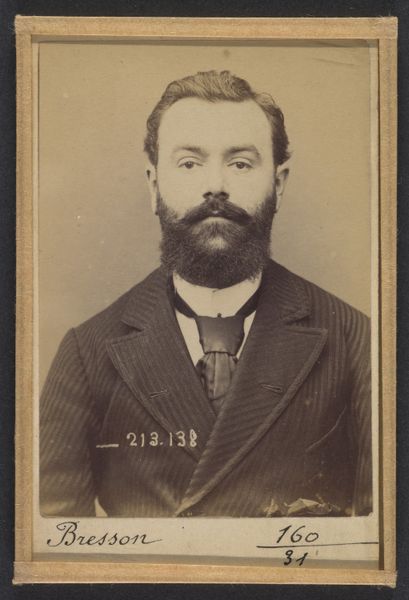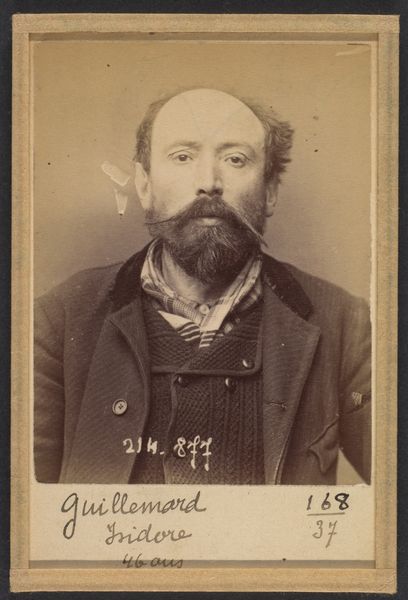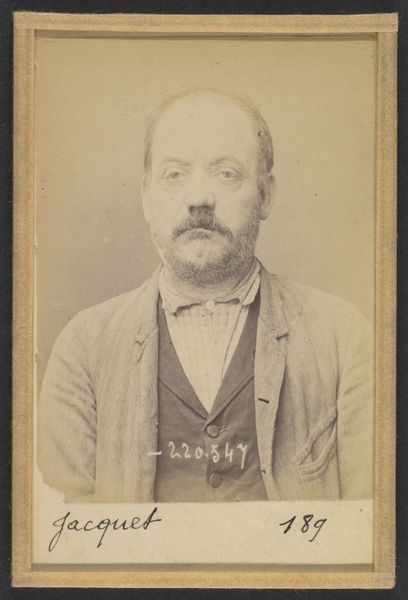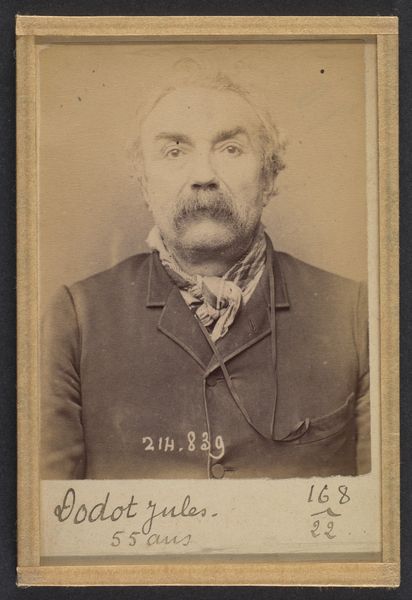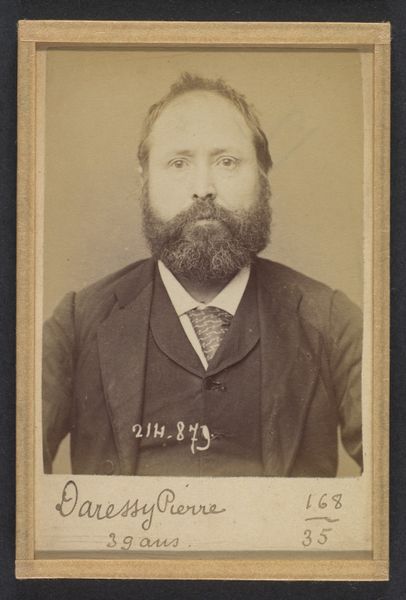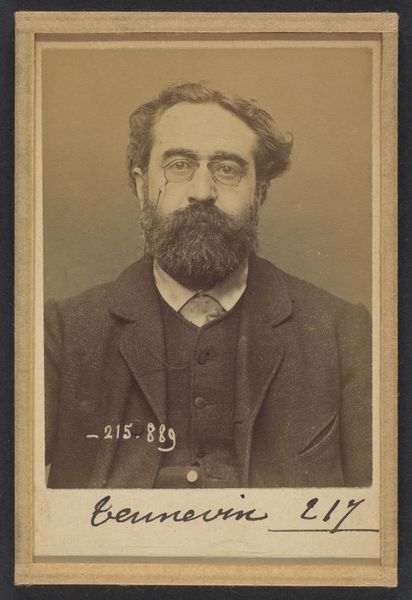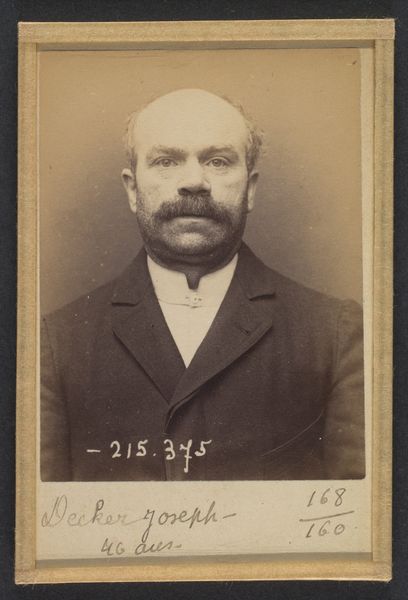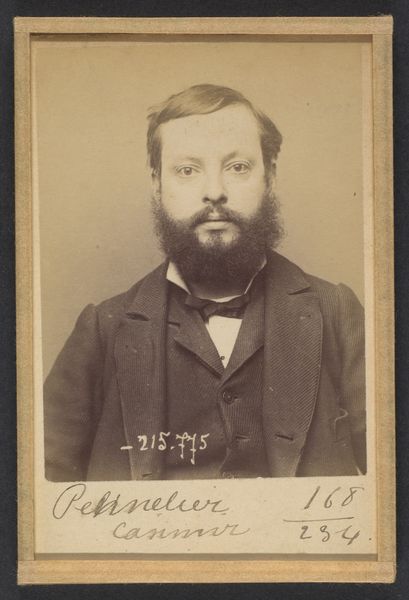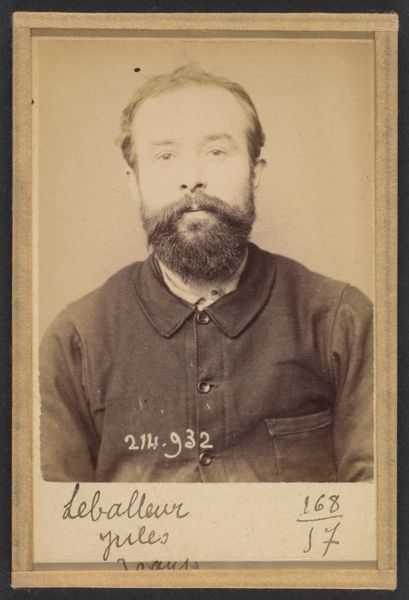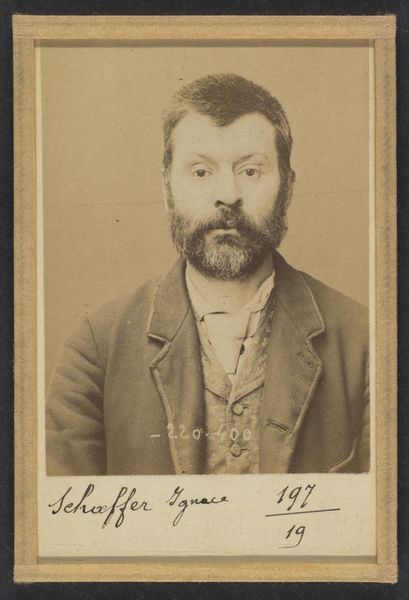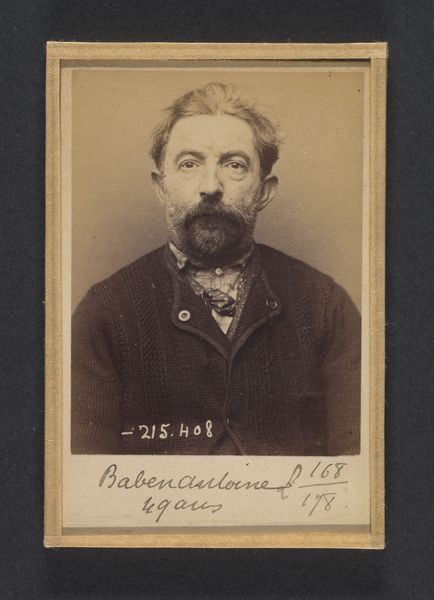
Kahn. Rodolphe. 43 ans, né le 15/1/51 à Lyon (Rhône). Courtier de commerce. Anarchiste. 8/3/94. 1894
0:00
0:00
photography, albumen-print
#
portrait
#
portrait
#
photography
#
albumen-print
#
realism
#
poster
Dimensions: 10.5 x 7 x 0.5 cm (4 1/8 x 2 3/4 x 3/16 in.) each
Copyright: Public Domain
Curator: This is an albumen print by Alphonse Bertillon from 1894, currently residing at The Metropolitan Museum of Art. The subject is Rodolphe Kahn. Editor: My immediate impression is how staged and almost clinical the portrait feels. It's quite removed, despite its small size, wouldn't you agree? Curator: It is deliberate in its construction; Bertillon pioneered forensic photography. The process of creating albumen prints involved coating paper with a layer of egg white, then sensitizing it with silver nitrate. The print is a tangible document of its time, made during a period when photography was being harnessed for purposes of identification and social control. Editor: Precisely. Note the man's age and profession are inscribed beneath his image. Anarchist! Consider the social context: The late 19th century was a breeding ground for political radicalism, and anxieties about social upheaval were sky high. The act of cataloging an anarchist using photography served very specific ideological purposes. It attempts to dehumanize the Other. Curator: It is compelling how the print creates a sense of "evidence." The inscription grounds the image within systems of bureaucracy and knowledge production. It transforms the individual into a record. It asks you to ask about photographic processes that helped to forge modernity itself. Editor: And it raises critical questions about how such identification practices intersect with power, surveillance, and the construction of deviance. What were the politics inherent to his identity? As we know, criminalizing certain populations continues to take on racial dimensions. Bertillon's legacy continues to echo in our world today. Curator: His gaze resists total objectification. I am left to think about the social implications of photography as it entered the industrial era. Editor: The image provides so many avenues for social critique. Looking at this object made nearly 130 years ago, I consider how visual culture has changed – or stayed the same.
Comments
No comments
Be the first to comment and join the conversation on the ultimate creative platform.
